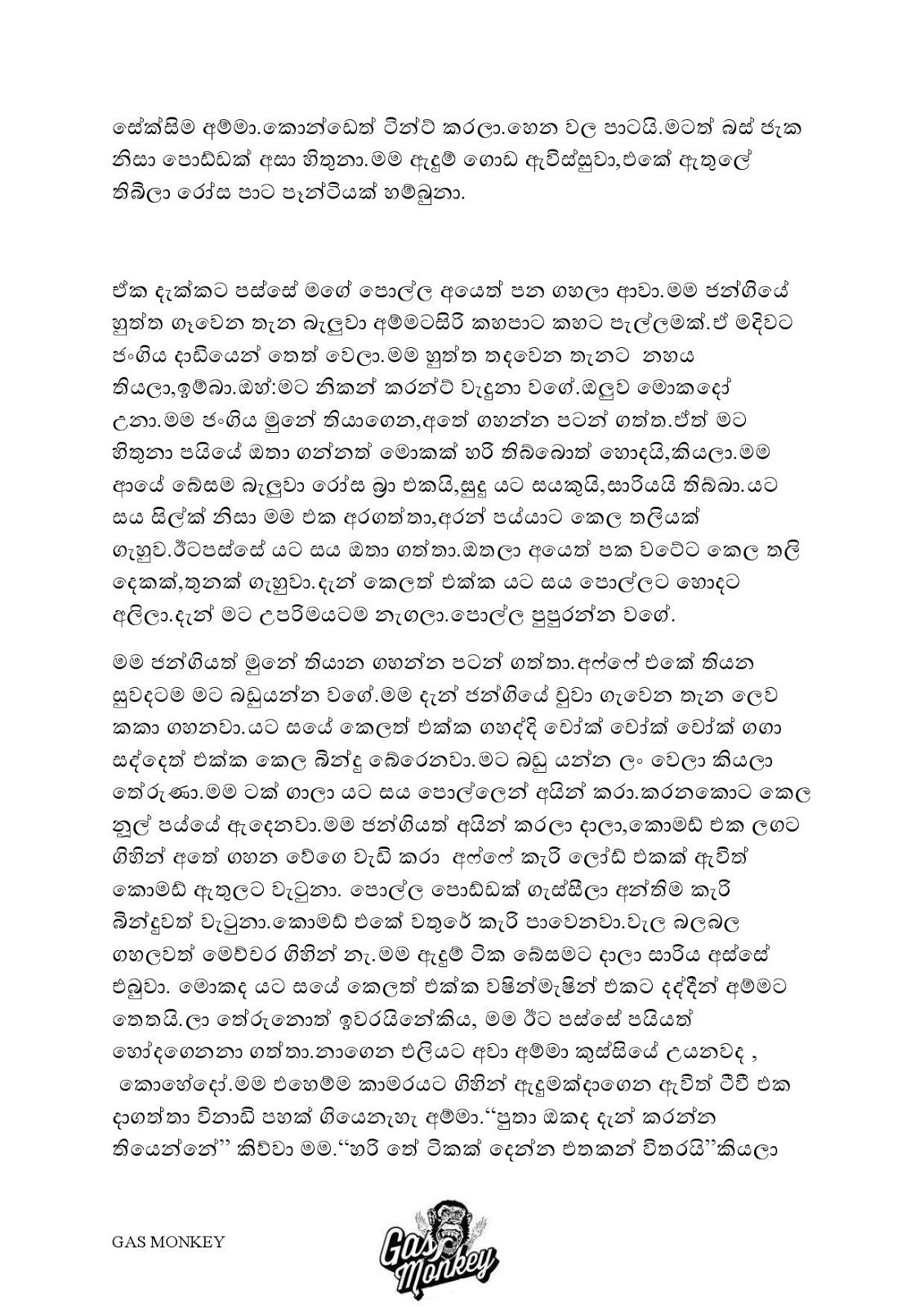Sinhala Wal Katha is a vibrant tapestry of storytelling that captures the essence of Sri Lankan culture. These tales, rich in tradition and folklore, resonate with the hearts of many, revealing the struggles, triumphs, and everyday lives of the people. They serve not only as entertainment but also as a means to preserve the history and values of a society that has evolved over centuries. In a world that is rapidly changing, Sinhala Wal Katha offers a glimpse into the past while continuing to inspire new generations.
At the core of Sinhala Wal Katha lies a deep connection to the land and its people. Every story reflects the unique experiences of Sri Lankans, encompassing themes of love, loss, wisdom, and resilience. These narratives often intertwine with local customs, beliefs, and the rich biodiversity of the island, creating a fascinating blend of reality and myth. As the tales are passed down through generations, they adapt and transform, yet their essence remains unchanged, making them an integral part of the Sri Lankan identity.
In this article, we will delve into the captivating world of Sinhala Wal Katha, exploring its significance, popular themes, and the impact it has on modern society. From traditional storytelling methods to contemporary adaptations, we will uncover the layers of meaning embedded in these stories. Join us as we embark on a journey through the enchanting realm of Sinhala Wal Katha, where every tale is a doorway to understanding the heart and soul of Sri Lanka.
What are the Origins of Sinhala Wal Katha?
Sinhala Wal Katha has its roots in the oral tradition of storytelling, which has been an integral part of Sri Lankan culture for centuries. These stories often draw inspiration from ancient texts, folklore, and the everyday experiences of the people. The oral tradition allowed for the preservation of cultural values and norms, as stories were shared at community gatherings and family events.
How Does Sinhala Wal Katha Reflect Cultural Values?
Every story in Sinhala Wal Katha serves as a mirror reflecting the cultural values and beliefs of the people. Themes such as family unity, respect for elders, and the importance of community are woven into these narratives. Through characters and their journeys, listeners gain insights into the moral lessons that are central to Sri Lankan society.
What Are Some Popular Themes in Sinhala Wal Katha?
- Love and Sacrifice
- Heroism and Bravery
- Tradition vs. Modernity
- Nature and Spirituality
- Social Justice
Who Are the Key Figures in Sinhala Wal Katha?
Throughout history, several notable figures have contributed to the richness of Sinhala Wal Katha. These storytellers, poets, and playwrights have played a crucial role in preserving and promoting these tales. Their works often bridge the gap between generations, ensuring that the essence of Sinhala Wal Katha continues to thrive.
Can You Share a Famous Sinhala Wal Katha?
One of the most famous Sinhala Wal Katha is the tale of "Ravana." This story, rooted in the ancient epic Ramayana, explores the complexities of good and evil through the character of Ravana, the demon king. His portrayal as both a villain and a tragic hero allows for a deeper understanding of the moral dilemmas faced by individuals.
What Impact Does Sinhala Wal Katha Have on Modern Society?
In contemporary Sri Lanka, Sinhala Wal Katha continues to influence various forms of art, including literature, theater, and cinema. These stories serve as a source of inspiration for modern creators, allowing them to reinterpret traditional tales in innovative ways. Furthermore, they promote cultural pride and solidarity among the Sri Lankan people, fostering a sense of identity in a rapidly globalizing world.
What Are the Future Prospects for Sinhala Wal Katha?
The future of Sinhala Wal Katha looks promising as new generations of storytellers emerge. With the advent of technology and social media, these stories can reach wider audiences, transcending geographical boundaries. By embracing both traditional and modern storytelling techniques, Sinhala Wal Katha has the potential to thrive and evolve, ensuring that the narratives of Sri Lanka remain alive and relevant.
| Personal Details | Bio Data |
|---|---|
| Name | Ravindra S. Kodithuwakku |
| Birthdate | March 15, 1975 |
| Profession | Storyteller and Poet |
| Notable Works | "Tales of the Ancient Kings", "The Heart of Sinhala Folklore" |
| Influence | Prominent figure in the revival of Sinhala oral storytelling |
In conclusion, Sinhala Wal Katha stands as a testament to the resilience and creativity of the Sri Lankan people. Through its rich narratives, it not only entertains but also educates and preserves the cultural heritage of the island. As we continue to explore and celebrate these stories, we ensure that the heart of Sri Lanka beats on through the ages.
You Might Also Like
Pam Klinger: A Journey Through Her Life And AchievementsDiscovering The Charms Of Brasserie Martin
Unlocking The Secrets Of RoadTestResults At NYRTSScheduler.com
Unraveling The Life Of Richard "Beebo" Russell And His Wife
Exploring The Life And Legacy Of Paul Finebaum's Family
Article Recommendations
- Robert Plant Wife
- Cardi B No Makeup
- Annalynne Mccord Husband
- Daryl Hannah And Neil Young Photos
- Cathy White Death
- How Many Of The Original Bee Gees Are Still Alive
- What Ethnicity Is Kari Lake
- Jason Beghe
- Josh Harris Fisherman
- Who Is Damon Imani


